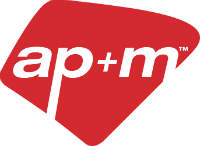 Inlet fogging has become a common aspect of the gas turbine industry over the past ten years because inlet fogging systems enhance performance, component life and overall reliability.
Inlet fogging has become a common aspect of the gas turbine industry over the past ten years because inlet fogging systems enhance performance, component life and overall reliability.
At first glance, this impact on your gas turbine might seem surprising, but if you take a careful look at gas turbine use over the past decade, it starts to make a whole lot of sense.
Why Gas Turbines Increasingly Need Inlet Fogging
The loads required by gas turbines keeps increasing, which means heavy cycling and rapid starts putting a lot of stress on machinery. The more stress there is the more maintenance and operating costs you can expect.
All this has an effect on gas turbine output. As your ambient temperatures rise, your gas turbine output decreases. Each 10°F (-12.2°C) rise in temperature can result in as much as a 3-4% decrease in output and a 1% rise in heat rate.
This is where inlet fogging systems come in.
How an Inlet Fogging System Works
Inlet fogging is a type of evaporative cooling system that, as the name suggests, cools’ inlet air. It does this by spraying a fog of high-pressure, demineralised water through a series of nozzles set around the inlet.
The ‘micro-fine’ droplets produced by the fogging system evaporate quickly, allowing them to cool the inlet air without negatively affecting the gas turbine’s structure. When optimised, fogging systems can achieve a compressor inlet temperature approaching that of wet bulb temperatures, without increasing pressure drop.
In other words, a well-designed fogging system augments your gas turbine output by reducing inlet temperature. A heavy-frame GT can have its output increased by 8% with a heat rate improved by almost 2% all thanks to cooling inlet air by 20°F (-6.6°C).
Why Parker’s Macrospray Inlet Fogging Nozzles?
AP+M is proud to be an authorised distributor of inlet fogging Macrospray nozzles through our partnership with Parker Hannifin.
Parker’s Macrospray Inlet Fogging Nozzles provide a wide range of benefits that make them stand out from the competition, including impressive performance at lower operating pressures and uniform sprays that are free of streaking or gaps.
Because the droplets generated are never too large to evaporate, Parker nozzles provide:
- Less water wastage than competitors
- Smaller potential for duct corrosion
- Slower compressor blade erosion
Plus, Parker’s Macrospray Inlet Fogging Nozzles demand as much as 20% less water when generating the same increase in power output.
Parker’s reputation for repeatable and reliable nozzle spray performance gives you improved durability and longer nozzle life, and we couldn’t be prouder to offer them to our customers at AP+M.

